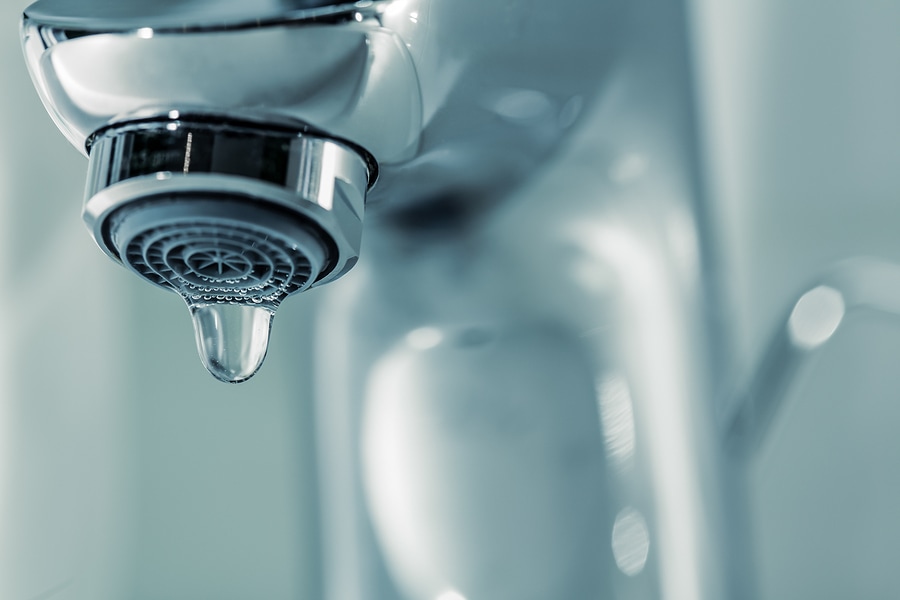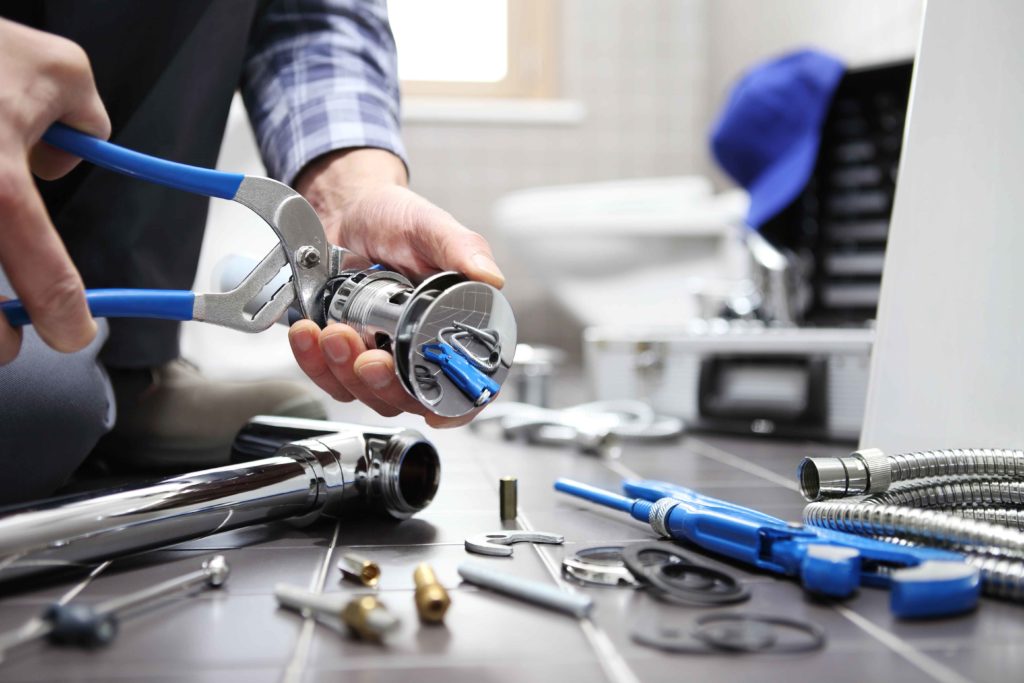An Upsides of Fixing a Faulty Faucet
Click HereWhat're your concepts on Why It's Important to Fix Leaky Faucets?

Trickling faucets might look like a minor trouble, however their effect exceeds just the nuisance of the sound. From drainage to sustaining unneeded monetary expenses and health and wellness risks, ignoring a trickling tap can cause different consequences. In this write-up, we'll explore why it's important to address this usual home issue promptly and efficiently.
Waste of Water
Ecological Impact
Trickling faucets contribute significantly to water wastage. According to the Epa (EPA), a solitary faucet trickling at one drip per second can throw away more than 3,000 gallons of water annually. This not only stress water sources but likewise influences ecosystems and wildlife depending on them.
Financial Prices
Enhanced Water Expenses
Past the ecological influence, dripping taps can inflate water bills considerably. The accumulated wastage in time equates right into greater energy expenses, which might have been prevented with prompt fixings.
Possible Home Damage
In addition, long term trickling can cause damage to fixtures and surfaces surrounding the tap. Water buildup can trigger staining, deterioration, and also structural issues if left unattended, causing extra repair prices.
Health and wellness Concerns
Mold and Mold Growth
The continuous presence of dampness from a dripping tap produces a perfect setting for mold and mildew development. These fungi not just compromise interior air top quality but likewise position health risks, particularly for people with breathing conditions or allergic reactions.
Waterborne Conditions
Stagnant water in trickling taps can become a breeding place for germs and other pathogens, boosting the risk of waterborne conditions. Contaminants such as Legionella microorganisms grow in stationary water, potentially bring about severe health problems when consumed or inhaled.
Do it yourself vs. Expert Fixing
Benefits and drawbacks of Do It Yourself Repair
While some might try to repair a trickling faucet themselves, DIY fixings include their very own collection of difficulties. Without correct knowledge and devices, DIY efforts can exacerbate the issue or result in incomplete fixings, prolonging the trouble.
Benefits of Employing a Specialist Plumber
Hiring an expert plumber ensures that the underlying root cause of the trickling tap is resolved properly. Plumbing technicians have the expertise and equipment to identify and fix faucet concerns efficiently, saving time and minimizing the threat of additional damage.
Step-by-Step Guide to Dealing With a Dripping Faucet
Tools Needed
Before trying to repair a leaking tap, gather the required tools, consisting of an adjustable wrench, screwdrivers, substitute components (such as washing machines or cartridges), and plumber's tape.
Typical Faucet Issues and Their Solutions
Recognize the type of tap and the details problem triggering the drip. Typical troubles include worn-out washers, rusty valve seats, or malfunctioning O-rings. Describe maker guidelines or online tutorials for step-by-step advice on repair services.
Preventive Measures
Normal Maintenance Tips
To prevent leaking taps, carry out regular maintenance such as cleansing aerators, examining for leakages, and replacing damaged parts immediately. In addition, think about mounting water-saving devices or upgrading to more effective fixtures.
Relevance of Prompt Repair Works
Resolving dripping faucets as soon as they're observed prevents further water wastage and potential damage, eventually saving both water and money over time.
Effect On Residential Or Commercial Property Value
Perception of Well-Maintained Residential Or Commercial Property
Preserving a building in good condition, consisting of resolving maintenance concerns like trickling faucets, boosts its perceived value and value among possible buyers or lessees.
Influence on Resale Value
Properties with well-kept plumbing fixtures, including faucets, command greater resale worths in the real estate market. Dealing with leaking taps can add to a positive impression during residential property inspections and negotiations.
Environmental Responsibility
Private Payment to Preservation
Taking duty for dealing with trickling taps straightens with more comprehensive initiatives towards water conservation and environmental sustainability. Every individual's actions jointly make a substantial effect on protecting precious resources.
Sustainable Living Practices
By focusing on timely repair work and adopting water-saving habits, people contribute to sustainable living techniques that benefit both existing and future generations.
Final thought
Dealing with a trickling faucet goes beyond plain comfort; it's an important action toward preserving water, decreasing economic expenses, and guarding health and wellness and property. Whether with do it yourself repair work or expert assistance, doing something about it to fix trickling faucets is a small yet impactful method to advertise responsible stewardship of resources and contribute to a much healthier, more sustainable future.
How to Fix a Leaky Faucet: Step-by-Step Repair Guide
A leaky faucet may seem like a simple annoyance, but if it's not fixed promptly, that leak could cost hundreds to potentially thousands. From water damage to mold, mildew, and high water bills, even a tiny leak can be catastrophic if left unattended. Damage like this can even affect the overall value of your home, so it's important to take the right approach for leaky faucet repair. You may need the help of a plumber in some cases, but we've got a few tips you can try on how to fix a leaky faucet before calling the pros.
Four Faucet Types
When you're learning how to fix a leaky faucet, the first step is knowing what kind of faucet you're working with! There are four common types.
Cartridge Faucets
Cartridge faucets come in one- or two-handled varieties. In one-handled cartridge faucets, hot and cold water combines in a single cartridge. In the two-handled versions, hot and cold water are controlled separately and mixed in the faucet.
Ball Faucets
Ball faucets have a single lever you push up and down to adjust the pressure and rotate to change the temperature. A slotted metal ball controls the amount of water allowed into the spout.
Compression Washer Faucets
They're the oldest type of faucet, but they're still used in many homes — especially older ones. Compression faucets have two separate handles that, when turned, raise or lower the washer that seals a water valve. This valve stops water from flowing through the faucet when it is turned off.
Disc Faucets
Disc faucets rarely need to be repaired due to their maintenance-free design. The water flow is controlled by two discs — the upper one raises and lowers against a fixed lower disc, creating a watertight seal. If your disc faucet starts leaking, you may need to replace the seals or clean residue buildup from the inlets.
Fixing a Leaky Faucet
Step 1: Turn Off the Water
Whether you're learning how to fix a leaky bathtub faucet or how to fix a leaky kitchen faucet, always turn off the water supply to your working area when you're fixing a leak. The last thing you want is a flood added to your list of things to fix.
Look for the shutoff valves below your sink or around the tub and turn them clockwise to stop the water flow. If your faucet doesn't have shutoff valves, you may need to turn off the water for the whole house. Check to make sure it's off by turning the faucet on. If nothing comes out, you're ready to start the repair.
Step 2: Take Apart the Faucet
How you disassemble your faucet depends on the type of fixture you have. You can use a flathead screwdriver to remove the caps on top of the handle or handles for cartridge and compression faucets. Inside, you should see handle screws. Unscrew these with a screwdriver to remove the handle.
Disc- and ball-style faucets will typically have an inlet screw near the handle, and removing that will reveal the interior of the faucet.
Detach the Valve Stem
For cartridge- and compression-style faucets, you'll see the inner valve stem or cartridge once you remove the faucet handles. If you have a compression faucet, unscrew the brass valve stem. If you have a cartridge faucet, pull out the cartridge. If your cartridge has been in place for a while, it may require some tools or extra force to remove it due to mineral deposits.
Examine and Replace Parts
Once you've removed the parts, check them out to confirm what needs to be replaced. You may see corroded rubber washers, O-rings, stems, or cartridges. On a ball-style faucet, check the seats and springs for damage.
If you need to repair a leaky disc faucet, check the inlet and seals on the lower disc.
Once you determine what parts must be replaced, visit your local hardware store. Bring the damaged parts with you to ensure you can purchase the correct components to replace them.
Clean Valves and Faucet Cavity
If you've removed a stem or cartridge, you may notice mineral buildup in the faucet's threads. Use white vinegar to clean the valve seat by soaking it for a few minutes, then scrub it away with a soft toothbrush and rinse with warm water. You can also clean the interior of the faucet in the same way.
Reassemble the Faucet
Once your faucet is cleaned and the required parts have been replaced, it's time to reassemble it. Put the pieces back together and slowly turn the water supply back on. Doing this slowly is crucial because too much initial water pressure can damage the new hardware you've just installed.
https://homewarranty.firstam.com/blog/how-to-fix-leaky-faucet

We were guided to that write-up about 4 Common Reasons for a Leaky Faucet from a friend on another web property. You should pause to share this post if you appreciated it. Kudos for being here. Please stop by our blog back soon.